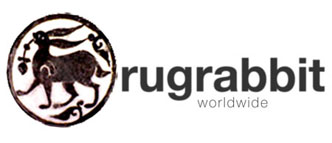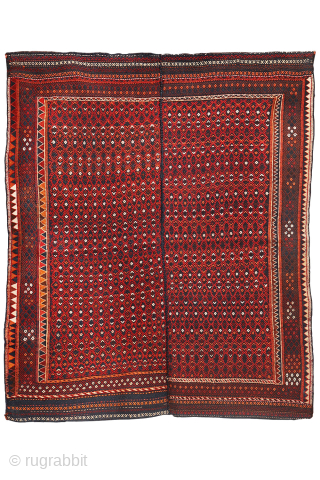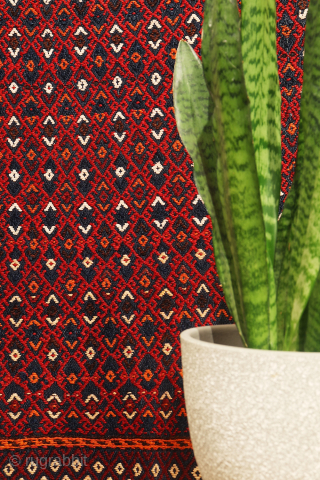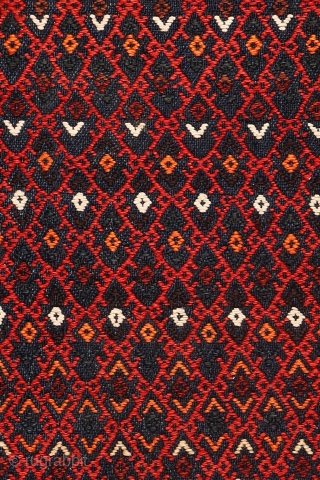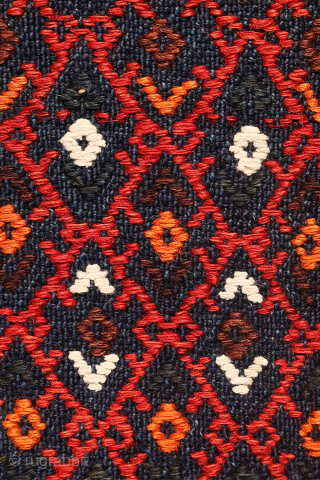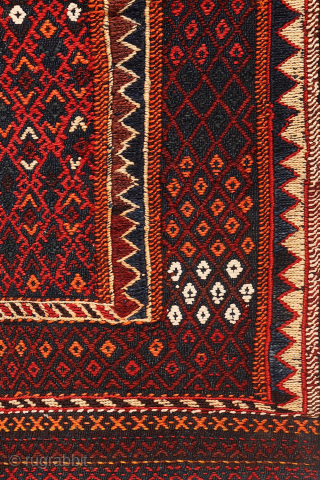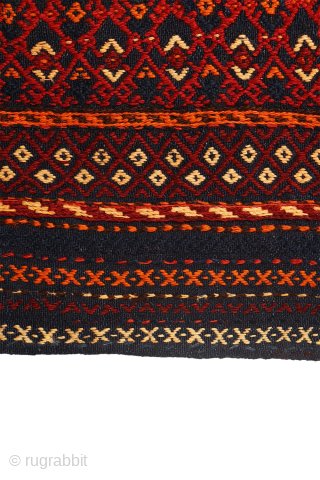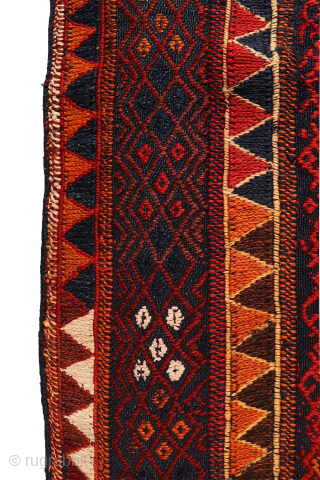Back
his type of kilim is known locally in southern Iran as a “shiraki”, a word that literally means “needle work” — though, interestingly, it is woven on a loom rather than sewn. Due to the limited size of the looms available to most weavers, shiraki kilims were traditionally woven in two separate panels and then meticulously joined to achieve the desired width. In this particular piece, the two halves exhibit distinct personalities: the left side is more colorful and playful, while the right half leans toward a more refined and subdued elegance.
This antique kilim was woven by an ethnic Arab weaver in southern Iran, carrying the rich textile traditions of the region. The wool used is of outstanding quality — soft, lustrous, and full of life. It remains in perfect condition, a testament to both the craftsmanship and the materials used. All dyes are natural, and the white floral motifs are woven using undyed white cotton, adding delicate contrast and texture to the design.
Material: 100% hand-spun sheep wool
Size: 197×162 cms
Origin: Arab tribe from Iran
Date of weaving: 1920’s
You can buy this kilim directly from our web: https://www.nomada.biz/en/producto/antique-arab-shiraki-kilim-from-iran-...
- Home
- Antique Rugs by Region
- Category
- Profiles
- Post Items Free
- Albums
- Benaki Museum of Islamic Art
- Budapest: Ottoman Carpets
- Gulbenkian Museum
- Islamic Carpets. Brooklyn
- Islamic Textiles. Brooklyn
- Konya Museum: Rugs
- MKG, Hamburg
- MMA: Caucasian Carpets
- MMA: Mamluk Carpets
- MMA: Mughal Indian Carpets
- MMA: Ottoman Carpets
- MMA: Safavid Persian Carpets
- MMA: Turkmen Rugs
- McCoy Jones Kilims
- Ottoman textiles. Met
- Philadelphia Museum
- Rugs and Carpets: Berlin
- Seljuqs at the Met
- TIEM, Istanbul: Carpets
- V&A: Classical Carpets
- Vakiflar Carpets: Istanbul
- Baluch Rugs: Indianapolis
- Gallery Exhibitions
- Jaf an Exhibition
- Alberto Levi Gallery
- Andean Textile
- Christie's London: 2016
- Francesca Galloway
- HALI at 40
- ICOC Washington, DC 2018
- Jajims of the Shahsavan
- London Islamic Week April, 2018
- Mongolian Felts
- Navajo Rugs: JB Moore
- Persian Piled Weavings
- SF Tribal & Textile Art Show 2020
- SF Tribal 2019
- Sotheby's: C. Alexander
- Turkish Prayer Rugs
- Turkmen Main Carpets ICOC 2007
